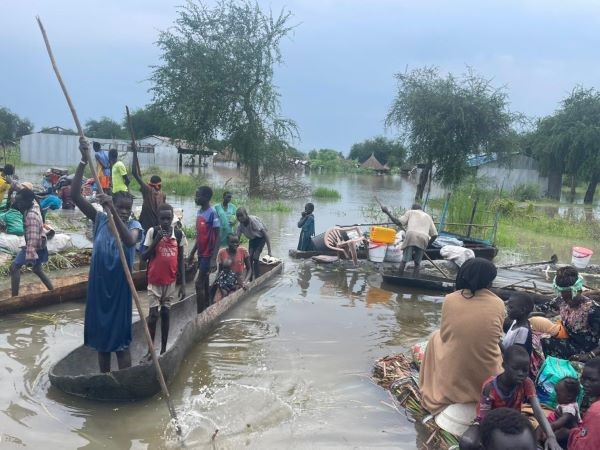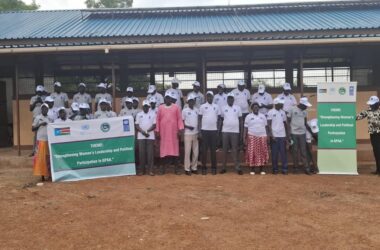By Bosco Bush
South Sudan is grappling with severe flooding as water levels in the River Nile rise due to heavy rainfall. Current statistics indicate that over 470,000 people have been significantly affected across 26 of the country’s 78 counties.
The United Nations Office for the Coordination of Humanitarian Affairs (UNOCHA) has projected that at least 3.3 million people could be at risk from further flooding as rains intensify between September and October.
In a recent statement, UNOCHA highlighted that the anticipated flood victims include communities already displaced by the floods from 2019 to 2022, exacerbating their vulnerabilities.
“Projections suggest that at the peak of the rainy season, between September and October, flooding could impact up to 3.3 million people nationwide, including communities still recovering from the devastating floods of 2019-2022, which displaced at least 1 million people annually,” OCHA said in the statement.
“The anticipated flooding will likely exacerbate existing vulnerabilities, especially in remote communities with significant access constraints to humanitarian aid,” read the statement.
Northern Bahr el Ghazal, Warrap, Western Bahr el Ghazal, Jonglei, Unity, Upper Nile, and Central Equatoria, are already grappling with compounded challenges such as previous floods, ongoing conflict, displacement, food insecurity, and the broader regional impact of the Sudan crisis.
Displaced individuals seek refuge with relatives in public facilities like schools and churches or sheltering in the open along roadsides, according to the agency.
The floods have devastated homes, destroyed crops, disrupted education and health services, and restricted access to essential facilities, escalating the risk of disease outbreaks.
Reports indicate rising malaria cases, respiratory tract infections, acute watery diarrhea, and snakebites since the onset of the rainy season in June.
It said flood-affected populations have been unable to tend to their lands and livestock, further aggravating their vulnerabilities.
On 20 August, the South Sudan Ministry of Water Resources and Irrigation issued an urgent appeal for communities in low-lying areas along the Nile to relocate, as water levels at the Mangala Telemetric Station in Juba County reached a five-year high of 14.85 meters.
Maximum water levels have also been reported at stations in Juba, Bor, and eight other locations, further worsening the humanitarian crisis.



